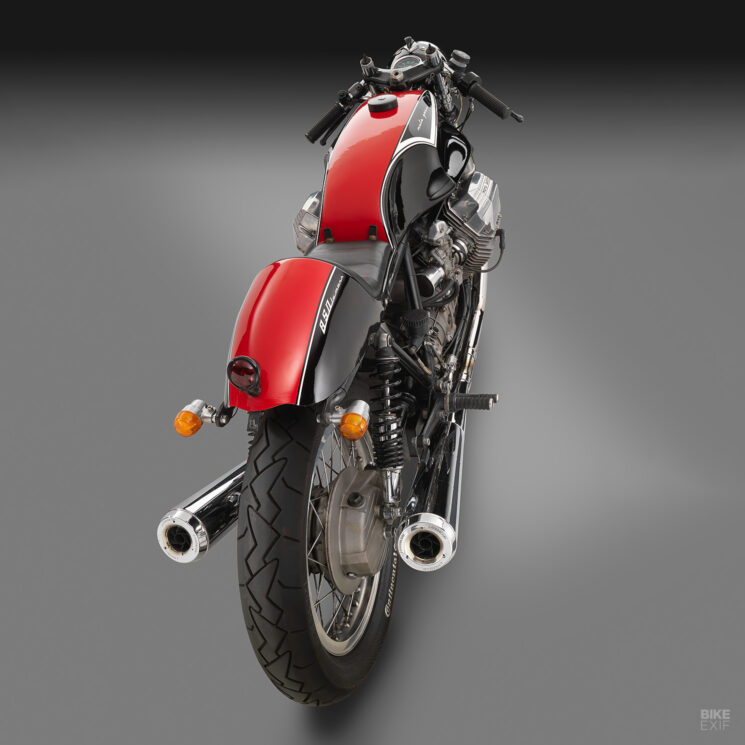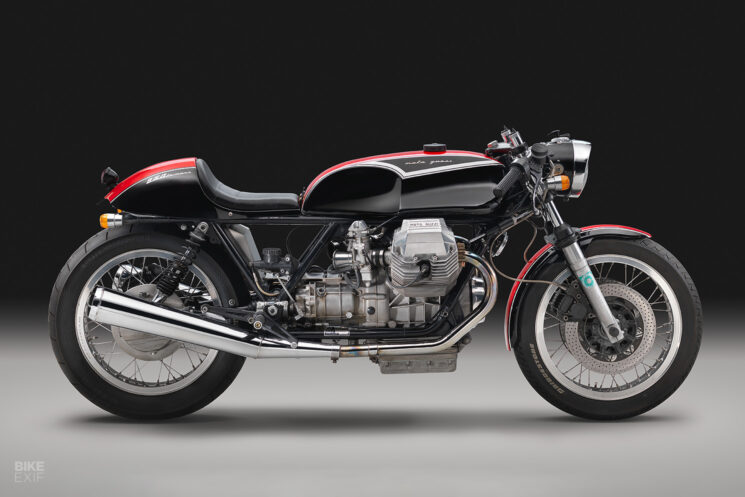
Despite their growing rarity and cost, the allure of owning, wrenching and riding a vintage machine is strong. Older bikes have a certain je ne sais quoi—the vibration, the thunderous sound, the smell of warm oil and fuel. A vintage Moto Guzzi Le Mans, for example, can be downright intoxicating.
Martin ‘Sewy’ Fischer knows the potent attraction of classic motorcycles well. This 1982 Moto Guzzi 850 Le Mans III café racer, named ‘Latisana’ after his favorite little Italian town, was his gateway drug into this scene. “I got infected by the café racer style and culture many years ago,” he says, “and this project was the first outcome of this affection.”

Sewy was working in the digital communications and marketing department of a major Austrian OEM at the time, and felt like he was losing touch with what it really means to work with motorcycles. “I also became more and more disengaged with every new generation of an even more perfect motorcycle,” he adds. “Full of gadgets, but lacking soul.”
Sewy decided to build a café racer in his spare time. Inspired by the long, low racing machines of the 60s and 70s, and needing a healthy dose of spirit, the Moto Guzzi 850 Le Mans III was an obvious choice as a donor.
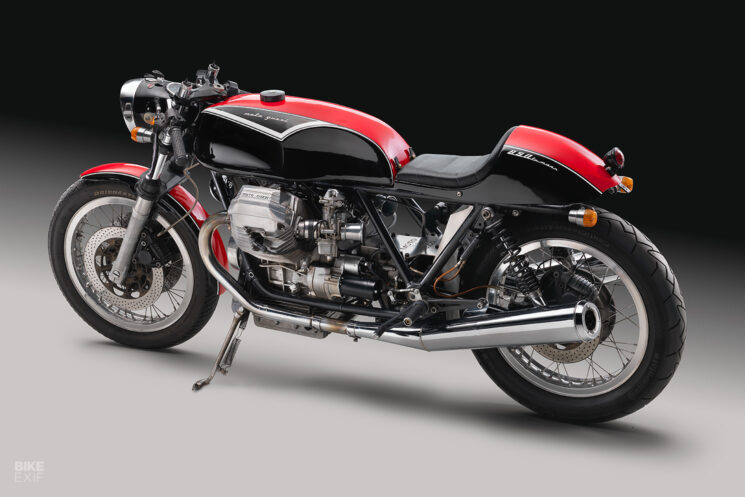
The Le Mans III is often overlooked these days, with a lot of people lusting after its older siblings (the Le Mans 850 and Le Mans 850 II). However, it has been said that the Mk.III (as it is colloquially known) is much more of a rider’s motorcycle. Moto Guzzi’s famous Tonti frame supplies a telepathic ride—especially when going gets twisty.
Sewy was off to a good start, then. Focusing on aesthetic and reliability improvements, he removed the factory bodywork, and replaced it with molded fiberglass parts. The tank is based on an unknown racing motorcycle from the 1970s, which Sewy was able to make a mold from.
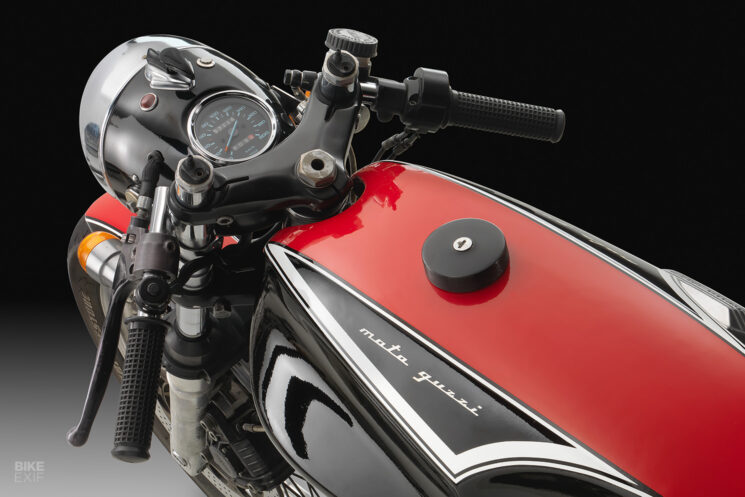
The fiberglass café racer hump, black leather seat and rear fender are also custom made. Combined with the black, red and white paint job, the new bits give the Le Mans the long, low silhouette that Sewy was aiming for.
Next, a fresh set of 18” Akront rims was laced to the stock hubs, with low clip-ons mounted below the custom top fork clamp. The factory air-assisted front forks were overhauled and dropped through the clamps a few inches, while a pair of adjustable Koni shocks were fitted to the back end. Tarozzi rear-sets round out the rider triangle.
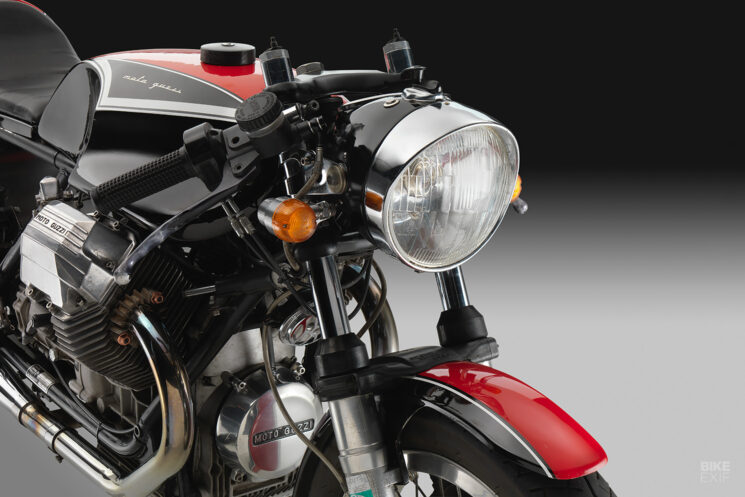
The engine and transmission also had a good once over. The cylinder heads were overhauled, the valve covers were polished, and a pair of aluminum velocity stacks were fitted to the Dell’Orto PHF36 carburetors. An electronic ignition was fitted too, as was a small, more powerful battery (it’s hidden under the swingarm).
There’s new lighting all the way around, the most notable of which is the vintage headlight, which kind of looks like an old BMW unit. Finishing touches include an electronics tray that doubles as a inner rear fender, and an engraved transmission plate. The bike also sports a pair of Lafranconi mufflers, which we know sound incredible.
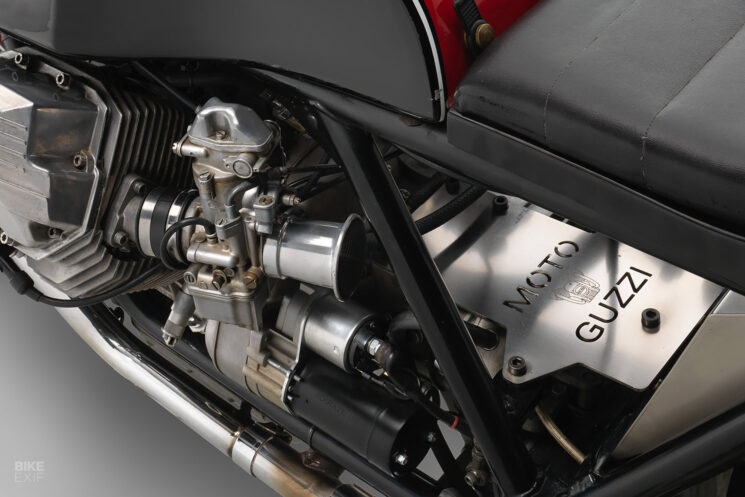
After the bike was built, Sewy used it as his personal ride for a few years—and even took part in the café racer sprint race at the Glemseck 101 festival, twice. But he eventually decided to part with it.
“I sold the Guzzi to a customer in Vienna, who is totally in love with it, and I’m going to use the money to fund a follow-up Guzzi in the same style, since I still have the molds for the fuel tank,” he explains. “Apart from that, I’m currently building an endurance racing-inspired four-valve Moto Guzzi.”
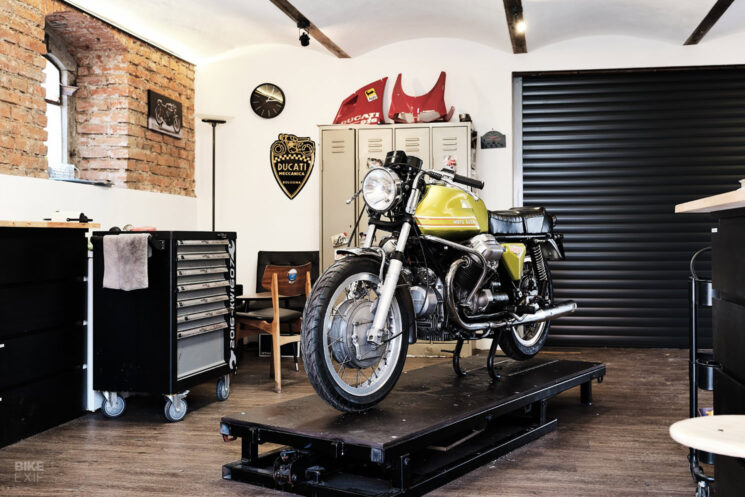
The good news is that both of these projects won’t have to happen after hours. Sewy had so much fun building and riding his Le Mans, that he eventually quit his job and opened a full-time moto workshop, Sewy Motorcycles.
“I’ve exchanged a desk for a workbench, and endless meetings for greasy hands,” he says. “From the digital back to the analog world, so to speak.”
